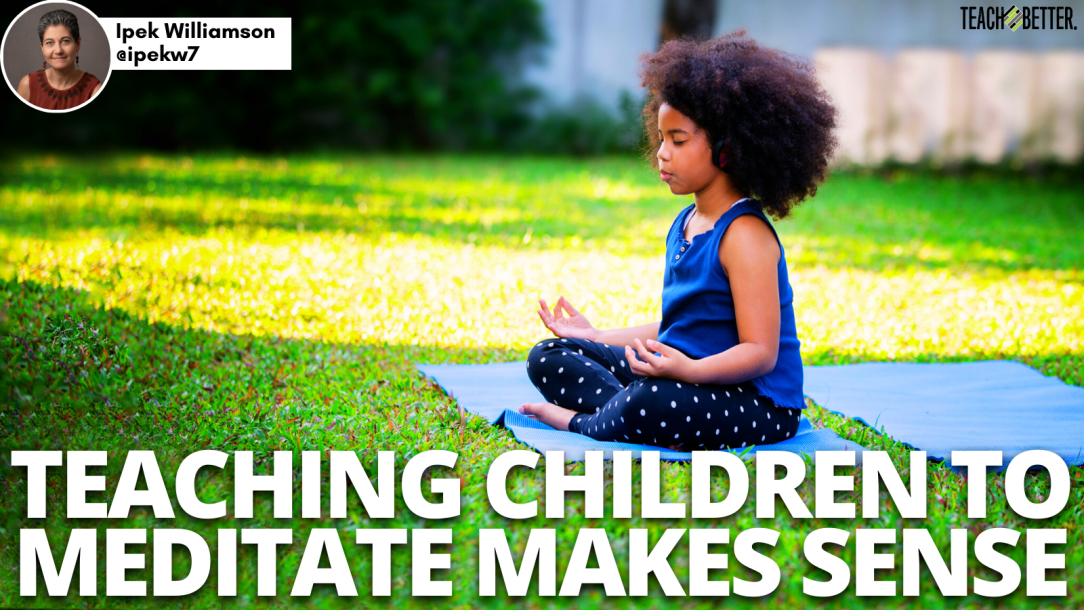TL;DR:
- Meditation helps students develop emotional regulation.
- It helps them improve their ability to handle stress or cope with difficult situations and develop empathy and compassion.
- Regular practice can also help students increase their level of self-awareness.
- Bring meditation to your students by starting simple. Use visualization techniques, make it a part of your routine, use props to help students focus, make it interactive, be a role model, and make it fun.
I see daily the growing number of meditators on the Insight Timer App where I lead live meditation sessions and showcase my 60+ meditation tracks. More and more people are becoming acquainted with meditation all around the world. Well, it is about time for a practice that has been around for thousands of years to finally become a household item!
With the mental health topic gaining more and more interest, meditation’s impact on improving mental and emotional well-being becomes even more pronounced.
With the mental health topic gaining more and more interest, meditation's impact on improving mental and emotional well-being becomes even more pronounced. Share on XIn recent years, meditation has also been increasingly recognized as a valuable practice for children.
Research has shown that meditation impacts children’s physical, mental, and emotional health very positively. For instance, studies have found that children who practice meditation have better focus and concentration, improved memory, and increased creativity. They also tend to have lower levels of anxiety and stress.
Meditation helps children develop emotional regulation too. It is a fact that some children become easily overwhelmed by emotions and experience difficulty expressing themselves. When practiced regularly, meditation helps them learn how to acknowledge and accept their feelings. Furthermore, it helps them improve their ability to handle stress or cope with difficult situations.
Another potential benefit of meditation for children is to help them develop empathy and compassion. Children who meditate learn to be more aware of the feelings and needs of others. And they accordingly become kinder, more compassionate, and more understanding.
That’s not all…There’s more!
Regular and consistent practice of daily meditation also helps children develop self-awareness. They learn to be aware of their thoughts, feelings, and needs. This improves their ability to make decisions that are true to themselves.
Additionally, when children learn to meditate, they handle the stress and demands of school and home life—making the lives of parents and educators much easier.
How to Bring Meditation to Children’s Worlds
Teaching children to meditate can be a fun and rewarding experience. Here are some tips to help make the process easy and enjoyable:
- Start with a simple meditation technique such as deep breathing. Teach children to breathe in through their nose, hold for a moment, and then exhale through their mouth. This will help them focus and relax.
- Use visualization techniques to help children focus. Encourage them to imagine a peaceful scene, such as a beach or a forest, to help them relax.
- Make meditation a part of their daily routine. Set aside a specific time each day for meditation and make it a consistent habit. Starting the day and/or ending it with meditation is the best!
- Use props to help children focus. A soft cushion or mat, or a small bell can help create a meditative atmosphere.
- Make it interactive. Encourage children to share their experiences and feelings after meditation and discuss the benefits of meditation with them.
- Be a role model. Children look up to adults, so it’s important to practice meditation yourself and share your experience with them.
- Keep it short and simple. Start with a few minutes of meditation and gradually increase the time as the children become more comfortable.
- Make it fun. Children respond well to games, songs, and stories. Incorporate meditative elements into fun activities to make them more entertaining.
As you see, there are various ways to acquaint children with meditation. And they could be tailored according to their age and needs. While it may not be appropriate for every child, it’s worth encouraging them to try and find what works best. Though, as with any skill, consistency and patience are key. And with time, anyone—including children—could learn to quiet their minds and be present.
About Ipek Willaimson
Ipek Williamson is a Change Master, Listener, Insight Coach, Speaker, Author, Meditation Advocate & Teacher. She perfectly blends her 20+ years of corporate experience with diversified areas of expertise as a coach, mentor, and teacher. Ipek works with overwhelmed professionals in creating a sense of peace and flow
in their lives.
Through her coaching style, inspired and empowered by core values, mental fitness, and mind mastery, Ipek helps her clients discover their true selves. In addition to 60+ highly acclaimed meditations she showcases through the Insight Timer App, Ipek leads live meditation sessions through that same application. She also offers group coaching, workshops, courses, and training to individuals, teams, and corporations.





